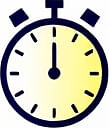Strategies for Effective Goal Achievement Tracking
 by Max Miller
by Max Miller
Discover how goal achievement tracking can transform your productivity by combining focused techniques and structured scheduling. Learn practical steps to monitor progress and reach your objectives efficiently.
Goal achievement tracking is a key part of improving daily routines. It helps individuals measure progress and stay committed to their targets. By using this method, busy professionals and students can see clear results from their efforts.
Why Goal Achievement Tracking Matters
In daily life, many people struggle with maintaining momentum on their objectives. Goal achievement tracking offers a way to break down ambitions into manageable steps. This approach ensures that every action contributes to larger outcomes. For instance, students preparing for exams can use it to monitor study sessions and adjust plans as needed.
Professionals often face packed schedules, making it hard to prioritize tasks. Time blocking works well here by assigning specific periods for focused work. Imagine setting aside an hour each morning for key projects; this creates a routine that supports overall success.
Incorporating Hyperfocus into Your Routine
Hyperfocus involves dedicating full attention to one task at a time. This technique can enhance how you track goals by reducing distractions. When you enter a state of hyperfocus, productivity rises naturally.
For example, a professional working on a report might set a timer for 25 minutes of uninterrupted work. After this, they review progress against their tracking system. Hyperfocus not only boosts efficiency but also provides data for future planning.
Students can apply hyperfocus during revision periods. By concentrating solely on one subject, they track comprehension levels more accurately. This leads to better performance and a sense of accomplishment.
The Role of Time Blocking in Tracking
Time blocking is about dividing your day into dedicated segments. Each block is for a specific activity, which aligns perfectly with goal tracking. This method helps prevent overlap and ensures balanced effort across tasks.
Start by listing your daily objectives and assigning them to time slots. For instance, block 9 AM to 10 AM for exercise if fitness is a goal. At the end of the day, check off completed blocks to see your progress.
In practice, this could mean a student blocks out evenings for homework. They then use a simple log to note what was achieved, making adjustments for the next day. Over time, this builds a reliable system for monitoring advancement.
Practical Tips for Implementation
To get started with goal achievement tracking, begin with simple tools like a notebook or app. Here's a list of steps to follow:
- Define your main objectives clearly.
- Break them into smaller, actionable items.
- Set up a daily schedule using time blocking.
- Use hyperfocus during each block to maximize output.
- Review your progress at the end of each day.
For professionals, integrating this into work life might involve team discussions. Share your tracking method to encourage accountability. Students can pair it with study groups for added support.
One effective tip is to use visual aids, like a progress chart. Mark achievements as they happen to maintain motivation. Remember, consistency is vital for long-term results.
Overcoming Common Challenges
Sometimes, unexpected events disrupt plans. In these cases, flexibility is important. Adjust your tracking without losing sight of the end goal. For example, if a meeting runs late, reschedule the affected block and note the change.
Building habits takes time, so start small. Begin with tracking one goal per week and gradually add more. This prevents overwhelm and keeps the process enjoyable.
Real-Life Examples
Consider a marketing professional aiming to launch a campaign. They use goal achievement tracking to set milestones, like completing research in the first week. By applying time blocking, they dedicate mornings to this task and afternoons to other duties. Hyperfocus helps them complete research efficiently, leading to on-schedule success.
A student preparing for finals might track reading assignments daily. They block two hours for study and use hyperfocus to absorb material deeply. Over weeks, this tracking shows steady improvement, boosting confidence.
Final Thoughts
By adopting goal achievement tracking with elements like time blocking and hyperfocus, you can turn aspirations into reality. This combination fosters discipline and clarity, making it easier to manage time effectively. Whether you're a professional or a student, these strategies offer a path to greater productivity and satisfaction.
